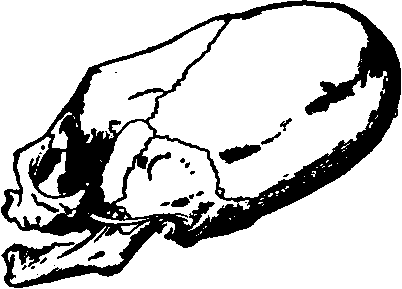Hygiene Of The Bony Skeleton
Description
This section is from the book "The Human Body: An Elementary Text-Book Of Anatomy, Physiology, And Hygiene", by H. Newell Martin. Also available from Amazon: The Human Body.
Hygiene Of The Bony Skeleton
In early life the animal matter of the bones is present in larger proportion than later; hence the bones of children are tougher, more pliable, and not so easily broken. The bones of a young child are tolerably flexible and are capable of being distorted by any long-continued strain ; therefore children should never be placed on a bench so high that the feet have no support; if this is frequently done the thigh bones will almost certainly become bent over the edge of the seat by the weight of the lower legs and the feet, and a permanent distortion may be produced. For the same reason it is important that a child be made to sit straight, when writing or drawing, to avoid the risk of producing a lateral curvature of the spinal column ; and young children should not be made to walk too early lest they become bow-legged, their bones not being rigid enough to bear the weight of the body. How easily the bones yield to prolonged pressure in early life is well illustrated by the distorted feet of Chinese ladies ; and by the extraordinary forms (Fig. 25) which some races produce in their skulls by tying boards or bandages on the heads of the children. A distorted foot, even in the United States, is no uncommon thing in these days of tight boots and high heels. The latter are especially bad, as, instead of allowing the weight of the body to bear properly directly downwards on the crown of the arch of the instep, they throw it forwards, and violently force the fore part of the foot into the toe of the boot. This not only crushes the toes and leads to deformities, corns, and bunions, but makes the gait stiff, inelastic and ungraceful.
How do the bones of children differ in composition from those of adults? How in properties? Why should children have a seat allowing the feet to be supported? Why should young persons be taught to sit erect while writing? What will happen if young children are encouraged to walk too much? Why? Give instances of the readiness with which bones can be distorted in early life. Why are high-heeled boots hurtful?

Fig. 25. Skull of a child of the tribe of Chinook Indians (Inhabiting the neighborhood of the Columbia river), distorted by tight bandaging so as to assume the shape considered elegant and fashionable by the tribe.
In advanced life the animal matter of the bones is present in deficient amount, and hence they are brittle and easily broken.
An infant has its bones but very imperfectly hardened by mineral matter. Hence the great importance of supplying it with food containing phosphate of lime, which is the chief mineral constituent of bone. Of all common articles of diet, milk contains most phosphate of lime: hence one great reason of its value as a food for children.
Fracture
When a bone is broken it is said to be fractured; when it is a clean break the fracture is simple; when the bone is more or less broken up into bits on each side of the break the fracture is comminuted; when the soft parts also are lacerated, so that there is an opening from the skin to the broken bone, the fracture is compound.
Why are the bones of an old person easily broken? Why should milk form part of a child's diet ?
What is a fracture? A simple fracture? A comminuted fracture? A compound fracture?
Once a bone is broken the muscles attached to it are apt to pull its ends out of place; hence it requires to be "set," and then kept in position by splints or bandages; this frequently needs much skill and a thorough knowledge of the anatomy of the body. A medical man should be summoned at once, as the parts around the break commonly swell very rapidly and make the exact nature of the fracture hard to detect, and also the replacement of the displaced ends more difficult.
It is known to physicians that serious bone diseases are sometimes due to the continued drinking of alcohol; also that the action of alcohol on the periosteum may render that membrane incapable of forming healthy bone from materials supplied by the blood; thus causing bad nutrition, leading to disease of the bones. Surgeons find that broken bones of habitual drinkers do not unite as readily as those of other patients.
Why does a broken bone need "setting"? What is the object of "splints"? Why should skilled assistance be obtained as soon as possible after a bone has been fractured?
In what way does alcohol tend to promote bone diseases? Tc interfere with the repair of fractures ?
Continue to:
